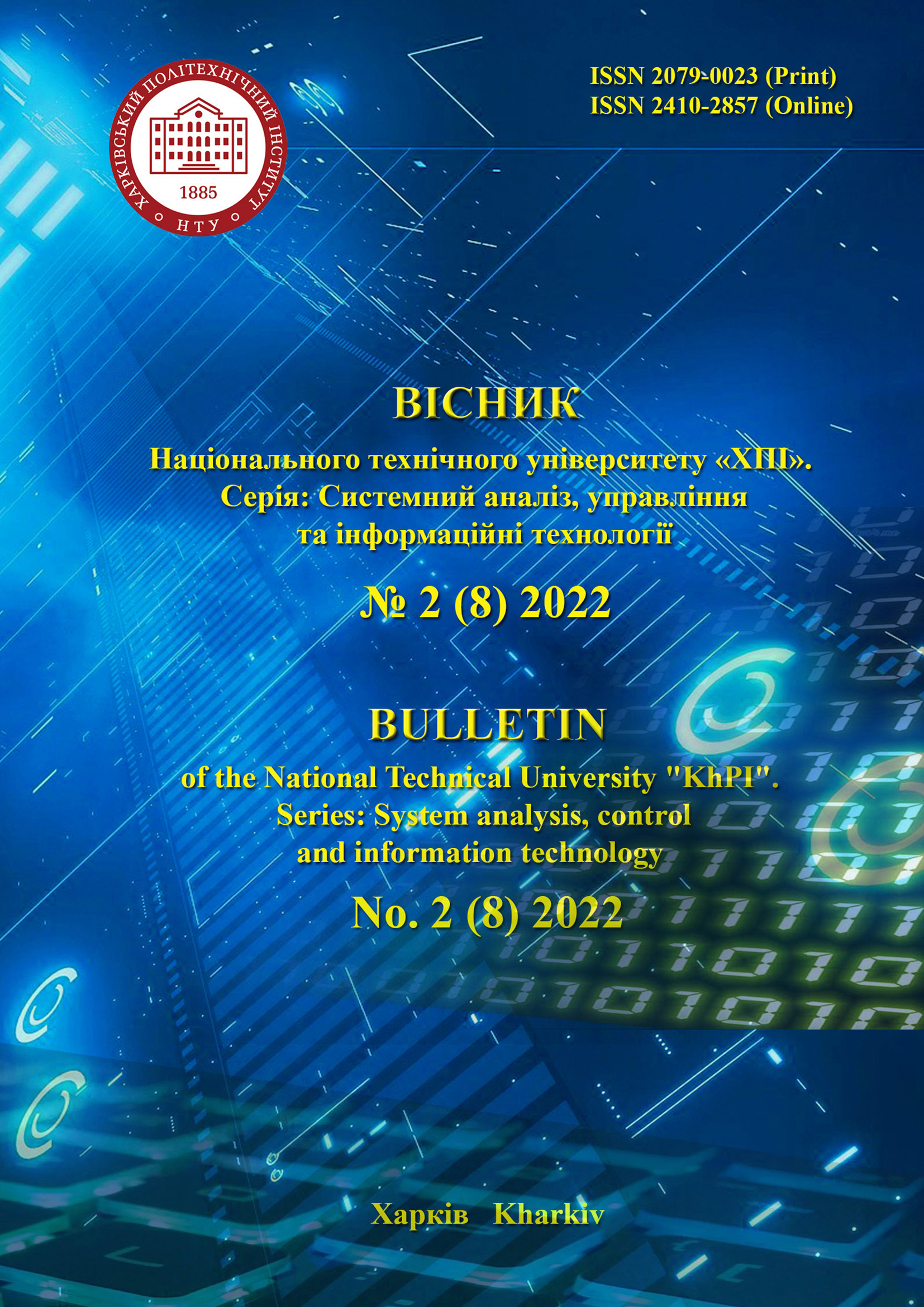A SOFTWARE TOOL FOR QUALITY MEASUREMENT OF BUSINESS PROCESS MODELS USING DISTANCES IN N-DIMENSIONAL SPACE
DOI:
https://doi.org/10.20998/2079-0023.2022.02.12Keywords:
business process model, quality measure, software tool, distance measure, n-dimensional spaceAbstract
This paper considers the problem of quality measurement of business process models using the n-dimensional space distances. Business process models are graphical schemes similar to flowcharts or activity diagrams utilized in software engineering, usually represented using the BPMN (Business Process Model and Notation) or EPC (Event-driven Process Chain) notations. Business process modeling aims to capture current enterprise workflows for their analysis and then improvement using automation through IT (Information Technology) systems deployment. Therefore, designed business process models should be of high quality, so all “weak spots” of described organizational workflows could be properly identified and replaced with more efficient solutions. Whereas process models, which are not understandable, un-structured, and/or uncertain, may cause even more issues when used to improve organizational activities. Therefore, this study proposes quality measures and a software tool that can be used to detect errors in BPMN and EPC business process models using distances in n-dimensional space. The formal problem statement based on the graph-based description of business process models was given. Business process model quality characteristics and measures that consider features of both BPMN and EPC notations were proposed. Distances in n-dimensional space were suggested for usage to measure the quality of business process models. The algorithm for business process model quality measurement was proposed. The software tool to measure the quality of BPMN and EPC business process models was designed and developed. The quality of sample business process models was measured using the software tool. Obtained results were analyzed and discussed. This paper considers the Euclidean distance only, while other existing n-dimensional space distance measures or, on the opposite, similarity measures, can be used to evaluate business process model quality in further research.
References
Reijers H. A. Business Process Management: The evolution of a discipline. Computers in Industry. 2021, no. 126, pp. 103404.
Han X., Gongjun Y. Fault Prediction with Static Software Metrics in Evolving Software: A Case Study in Apache Ant. Journal of Computer and Communications. 2022, no. 10 (2), pp. 33–45.
Dijkman R., Hofstetter J., Koehler J. Business Process Model and Notation. Springer, 2011. 179 p.
Nizioł M., et al. Characteristic and comparison of UML, BPMN and EPC based on process models of a training company. Annals of Computer Science and Information Systems. 2021, no. 26, pp. 193– 200.
Entringer T., et al. Comparative analysis main methods business process modeling: literature review, applications and examples. International Journal of Advanced Engineering Research and Science. 2019, no. 5 (6), pp. 100–116.
Guizani K, Sonia A. G. An approach for selecting a business process modeling language that best meets the requirements of a modeler. Procedia Computer Science. 2021, no. 181, pp. 843–851.
Trudeau R. J. Introduction to graph theory. Courier Corporation, 2013. 224 p.
Thant A. A., Soe M. A., Myanmar M. Euclidean, Manhattan and Minkowski Distance Methods For Clustering Algorithms. Int. J. Sci. Res. Sci. Eng. Technol. 2020, no. 7, pp. 553–559.
Juneau J., Luciano M. Java Web Applications. Java 17 Recipes. 2022, pp. 479–514.
Krogstie J. Quality of business process models. Quality in Business Process Modeling. 2012, pp. 53–102.
BPMN model API. Available at: https://docs.camunda.org/manual/7.16/user-guide/model-api/bpmnmodel-api/ (accessed 20.04.2022).
BPMN for research. Available at: https://github.com/camunda/bpmnfor-research/ (accessed 20.04.2022).
Downloads
Published
How to Cite
Issue
Section
License
LicenseAuthors who publish with this journal agree to the following terms:
- Authors retain copyright and grant the journal right of first publication with the work simultaneously licensed under a Creative Commons Attribution License that allows others to share the work with an acknowledgement of the work's authorship and initial publication in this journal.
- Authors are able to enter into separate, additional contractual arrangements for the non-exclusive distribution of the journal's published version of the work (e.g., post it to an institutional repository or publish it in a book), with an acknowledgement of its initial publication in this journal.
- Authors are permitted and encouraged to post their work online (e.g., in institutional repositories or on their website) prior to and during the submission process, as it can lead to productive exchanges, as well as earlier and greater citation of published work (See The Effect of Open Access).


